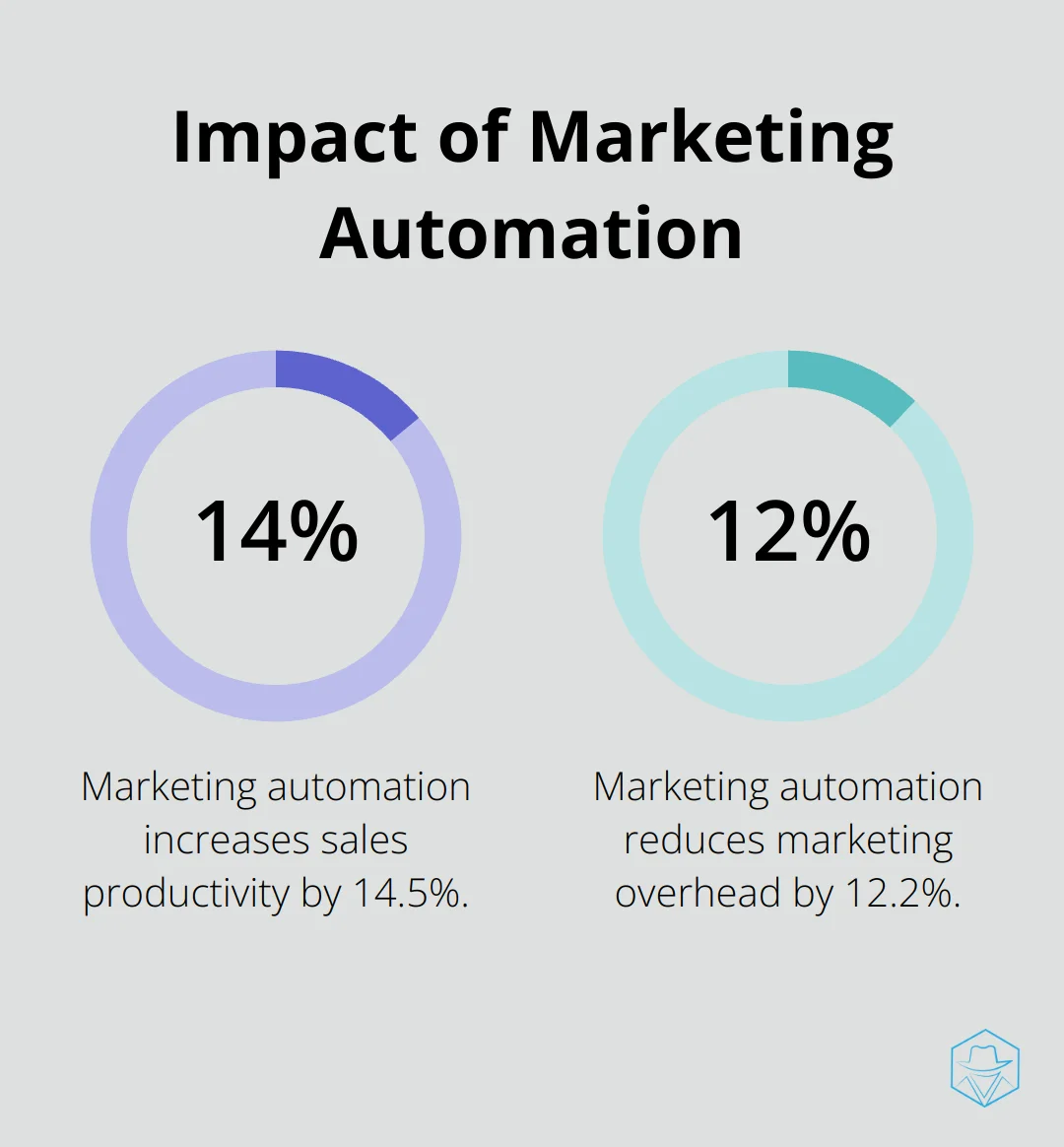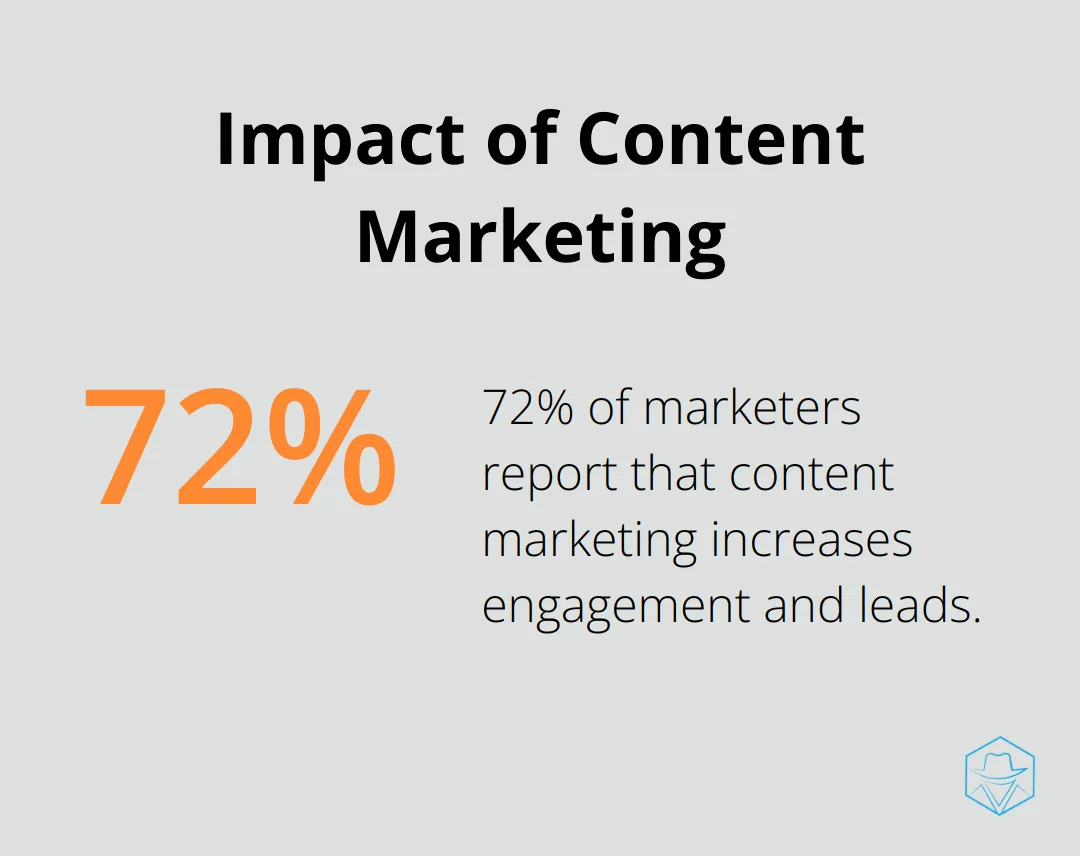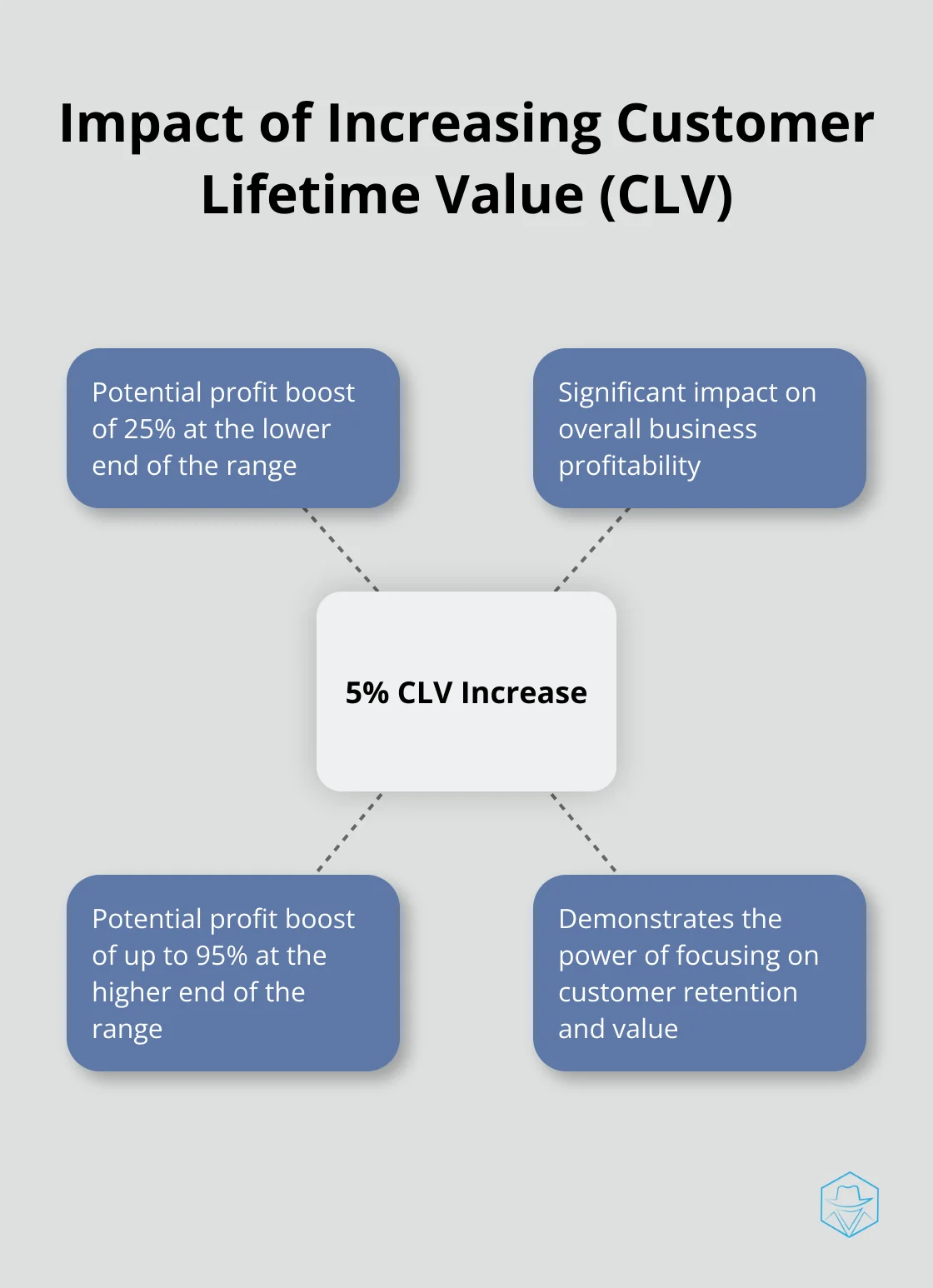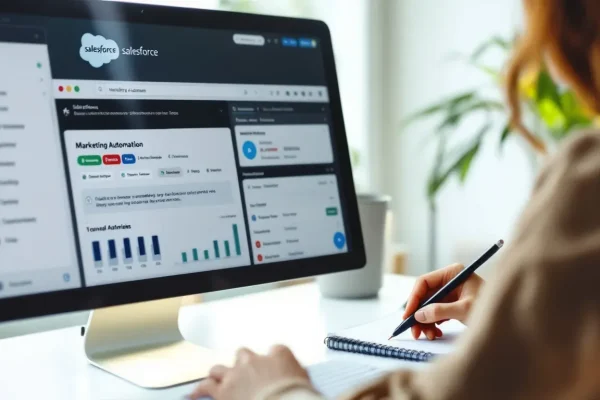Marketing Automation Best Practices for Success

At Drop Cowboy, we’ve seen firsthand how marketing automation can transform businesses.
Marketing automation best practices are essential for companies looking to streamline their processes and boost their bottom line.
In this post, we’ll explore the key strategies that can help you harness the power of automation to drive growth and efficiency in your marketing efforts.
What Is Marketing Automation?
Marketing automation revolutionizes businesses of all sizes. It uses software to automate repetitive marketing tasks, allowing teams to focus on strategy and creativity instead of manual processes.
Key Components of Marketing Automation
The foundation of any marketing automation system includes email marketing, social media scheduling, and lead nurturing workflows. Advanced systems incorporate features like personalization engines, A/B testing capabilities, and multi-channel campaign management.
These components work together to create powerful marketing campaigns. For example, platforms (like Drop Cowboy) combine ringless voicemail and SMS capabilities with AI-driven personalization to help businesses reach their audience more effectively.
Real Benefits for Businesses
The impact of marketing automation is significant and measurable. A study by Nucleus Research shows that marketing automation drives a 14.5% increase in sales productivity and a 12.2% reduction in marketing overhead. This substantial ROI benefits businesses of any size.

Small businesses can compete with larger companies by automating processes that would otherwise require a much larger team. Larger enterprises can use automation to manage complex, multi-channel campaigns at scale.
Debunking Common Misconceptions
Myth 1: Automation is Impersonal
Contrary to popular belief, marketing automation allows for highly personalized communication. Features like dynamic content and behavior-based triggers enhance human interaction rather than replace it.
Myth 2: Automation is Only for Big Businesses
This couldn’t be further from the truth. Many affordable solutions exist, and the efficiency gains often result in cost savings that make automation a smart investment for businesses of all sizes.
Myth 3: Automation is “Set It and Forget It”
Successful automation requires ongoing optimization. It’s about continually refining your approach based on data and results.
As we move forward, it’s important to understand how to implement these automation strategies effectively. The next section will explore best practices for segmenting your audience, creating valuable content, and developing automated workflows that drive results.
How to Implement Effective Marketing Automation Strategies
Segment Your Audience for Personalized Campaigns
Audience segmentation forms the foundation of effective marketing automation. Dividing your audience into distinct groups based on specific criteria allows you to create highly targeted campaigns that resonate with each segment. A study by Mailchimp reveals that segmented email campaigns have a 14.31% higher open rate compared to non-segmented campaigns.
Start your segmentation process by analyzing customer data to identify common characteristics, behaviors, or preferences. You can segment based on demographics, purchase history, engagement level, or stage in the buyer’s journey. For example, a B2B company might segment its audience into decision-makers, influencers, and end-users, tailoring content and messaging for each group.
Create Valuable Content for Each Stage of the Buyer’s Journey
After you segment your audience, create content that speaks directly to their needs and interests at each stage of the buyer’s journey. The Content Marketing Institute reports that 72% of marketers say content marketing increases engagement and leads.

For the awareness stage, focus on educational content that addresses your audience’s pain points. In the consideration stage, provide comparative content that showcases your solution’s benefits. For the decision stage, offer case studies, testimonials, and free trials to push prospects towards conversion.
Develop Automated Workflows and Triggers
Automated workflows power your marketing automation strategy. These workflows define the series of actions that occur based on specific triggers or conditions. For example, when a prospect downloads a whitepaper (trigger), they might automatically receive a follow-up email series (workflow) with related content.
Combining different communication channels in automated workflows can significantly boost engagement. For instance, you could set up a workflow where a prospect receives a voicemail introducing a new product, followed by an SMS with a link to more information.
Test and Refine Your Strategies
Regular testing and refinement of your workflows is essential. A/B testing different elements of your campaigns can lead to significant improvements. HubSpot reports that A/B testing your email campaigns can increase conversion rates by up to 49%.
Try different subject lines, email content, send times, and call-to-action buttons to see what resonates best with your audience. Use the data from these tests to continually improve your automation strategies.
Integrate Multiple Channels for a Cohesive Experience
Effective marketing automation doesn’t rely on a single channel. Integrate multiple channels (such as email, SMS, social media, and voice) to create a cohesive customer experience. This multi-channel approach ensures that your message reaches your audience through their preferred communication methods.
For example, you might start with an email campaign, follow up with an SMS reminder, and then use retargeting ads on social media to reinforce your message. This integrated approach creates multiple touchpoints and increases the chances of conversion.
The implementation of these strategies will set the foundation for a powerful marketing automation system. The next section will explore how to measure and optimize your marketing automation efforts, ensuring you achieve maximum ROI from your campaigns.
How to Measure and Optimize Your Marketing Automation
Track Essential KPIs
To gauge the success of your marketing automation, focus on these key performance indicators:
- Conversion Rate: This metric shows the percentage of leads that complete a desired action. The average conversion rate across industries is 2.35%, but top performers see rates of 11% or higher.
- Click-Through Rate (CTR): CTR measures the effectiveness of your email campaigns and ads. The average email CTR is 2.6%, but this can vary widely by industry.
- Customer Acquisition Cost (CAC): This metric helps you understand how much you spend to acquire each new customer. The average CAC has increased by nearly 50% over the past five years.
- Customer Lifetime Value (CLV): CLV helps you determine the long-term value of your customers. Increasing CLV by just 5% can boost profits by 25-95%.
- Return on Investment (ROI): This metric shows the overall effectiveness of your marketing automation efforts. Businesses using marketing automation see an average 14.5% increase in sales productivity and a 12.2% reduction in marketing overhead.

Leverage A/B Testing for Improvement
A/B testing is a powerful tool for optimizing your marketing automation. Here’s how to do it effectively:
- Test One Element at a Time: Focus on testing a single element (such as subject lines or call-to-action buttons) to get clear results.
- Use a Significant Sample Size: Ensure your test groups are large enough to provide statistically significant results. A good rule of thumb is at least 1000 recipients per variation.
- Run Tests for an Appropriate Duration: For most tests, 2-4 weeks is sufficient to gather meaningful data.
- Act on Your Results: Once you have clear winners, implement them across your campaigns and start testing the next element.
Harness AI and Machine Learning
Artificial Intelligence (AI) and Machine Learning (ML) revolutionize marketing automation optimization. Here’s how you can leverage these technologies:
- Predictive Analytics: Use AI to forecast customer behavior and tailor your campaigns accordingly. This can increase conversion rates by up to 30%.
- Dynamic Content Optimization: ML algorithms can automatically adjust content based on user behavior, increasing engagement rates by up to 250%.
- Chatbots and Virtual Assistants: AI-powered chatbots can handle customer inquiries 24/7, improving response times and customer satisfaction.
- Personalization at Scale: AI enables hyper-personalization of marketing messages, which can boost conversion rates by 6-10%.
Some platforms (like Drop Cowboy) integrate AI into their systems, allowing users to clone their voice for personalized messages. This technology has shown to significantly increase engagement rates in voicemail and SMS campaigns.
Continuous Analysis and Refinement
The key to successful marketing automation optimization is ongoing analysis and refinement. You should regularly review your KPIs, conduct A/B tests, and leverage AI and ML technologies to stay ahead of the curve and drive better results for your business.
Try to create a culture of data-driven decision making within your marketing team. Encourage team members to question assumptions, propose new ideas for testing, and share insights from campaign performance.
Final Thoughts
Marketing automation has transformed business marketing strategies. Companies that implement marketing automation best practices streamline processes, increase efficiency, and achieve better results. The benefits are substantial: increased sales productivity, reduced marketing overhead, and improved ROI. Marketing automation delivers personalized, timely, and relevant content to the right audience at the right time.
The future of marketing automation will involve more sophisticated AI and Machine Learning, enabling advanced personalization and predictive analytics. Voice technology will also play a significant role, as seen in platforms like Drop Cowboy that offer voice cloning for personalized campaigns. Marketers must adopt a mindset of continuous learning and adaptation to stay ahead in this dynamic field.
Marketing automation requires ongoing attention, creativity, and strategic thinking to unlock its full potential. Regular testing, analysis, and refinement of strategies will ensure continued effectiveness. Companies that leverage the right tools and commit to these principles can create more engaging, efficient, and successful marketing campaigns that drive growth and build lasting customer relationships.
blog-dropcowboy-com
Related posts

April 14, 2025
Email Hosting Solutions for Shopify: What You Need to Know
Explore the best email hosting Shopify options to boost communication, streamline operations, and enhance customer engagement for your online store.

August 4, 2025
Ringless voicemail marketing
Explore ringless voicemail marketing strategies to boost engagement, reduce costs, and connect effectively with clients in a non-intrusive way.

August 22, 2025
How Voice Branding Can Set Your Business Apart
Transform your business with voice branding. Learn how it differentiates your brand and boosts recognition effectively.

May 27, 2025
Boost Your Lead Follow-Ups in Wholesale Real Estate with Drop Cowboy
Boost lead follow-ups in wholesale real estate with Drop Cowboy. Improve response rates and close more deals efficiently with our innovative tools.

August 4, 2025
Why does a phone go straight to voicemail
Learn why a phone goes straight to voicemail with insights on network issues, busy schedules, Do Not Disturb mode, and find practical solutions.

April 22, 2025
Marketing Automation for Salesforce: A Complete Guide
Explore marketing automation for Salesforce with our complete guide. Boost efficiency, integrate seamlessly, and elevate your customer engagement strategy.